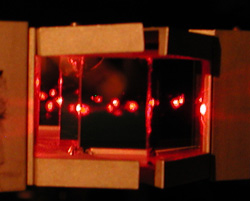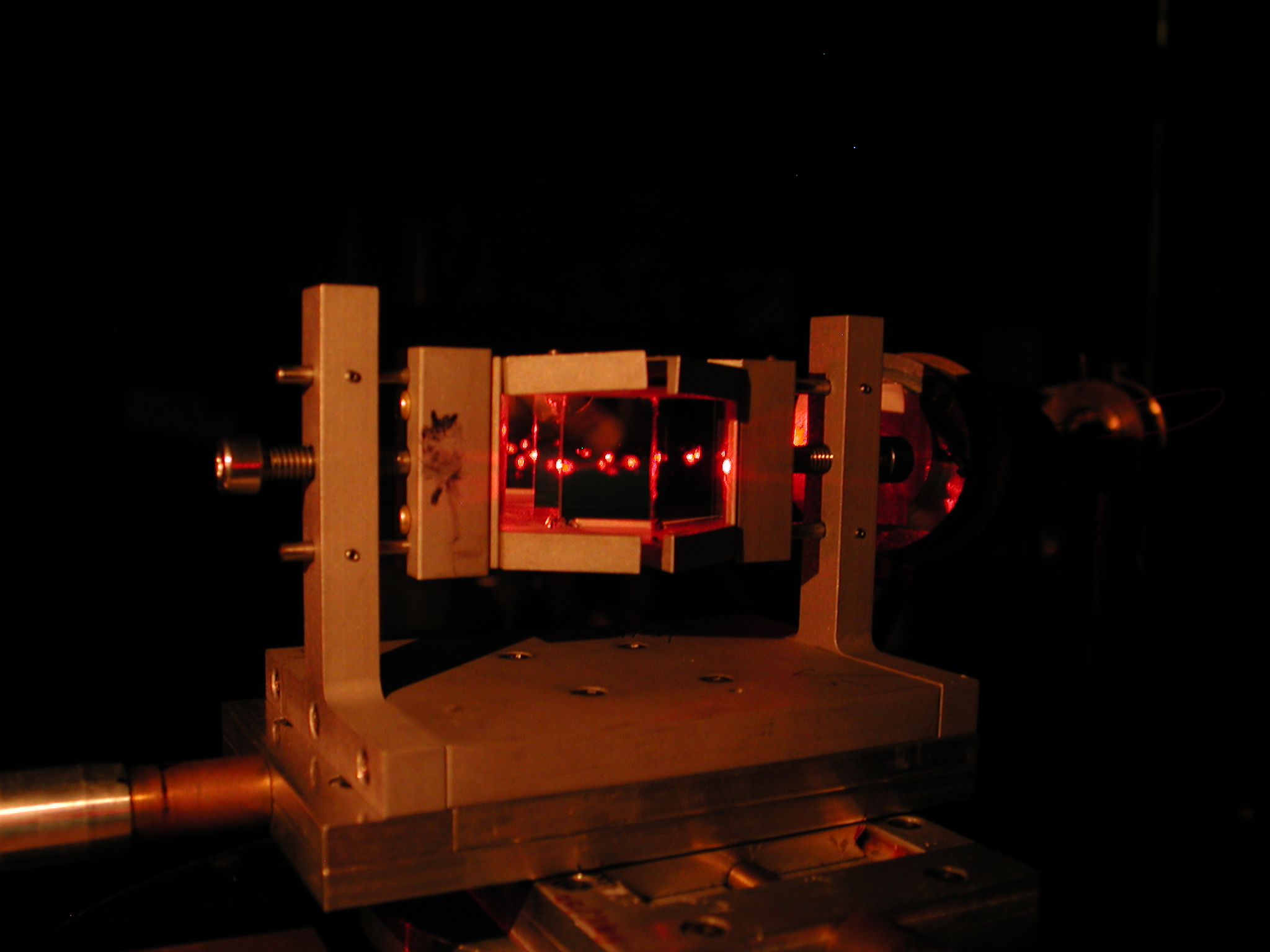Seeing through Silver
Standing alone, a thin film of silver is highly opaque, but in the 4 August PRL, researchers showed that it transmits light with remarkable efficiency when sandwiched between two transparent layers. Their demonstration relied on a standard effect by which light sneaks across narrow, seemingly forbidden regions, much like quantum particles “tunneling” through impossibly high barriers. But unlike the usual textbook tunneling, 100% transmission through the barrier is possible, the team says, although their proof-of-principle experiments using readily available materials reached just 35%. The researchers say it should be possible to build quantum barriers that would permit analogous loss-free tunneling for electrons in electronic circuits.
When a light ray passing from glass into air strikes the interface at a sufficiently shallow angle, it reflects entirely back into the glass with no transmission into the air. In this effect, known as total internal reflection, some of the electromagnetic field strays across the boundary between the two materials as a so-called evanescent wave, which carries no energy away. But if the evanescent wave encounters another block of glass a short distance away, a true light wave with reduced intensity appears in the second block.
This optical phenomenon is mathematically identical to the quantum tunneling of a particle through a classically insurmountable barrier. Ordinarily, neither process allows complete transmission of light or particles, but a more complicated gap or barrier structure can lead to transmission with perfect efficiency, say Ian Hooper and his colleagues at the University of Exeter in England.
The team imagined adding an extra layer of a different transparent material before and after the air gap. Using a standard analysis of how the fields pass across each interface in this sandwich, they showed that, at certain wavelengths and with the right material properties, perfect transmission of light should occur. The trick works thanks to canceling of light waves reflecting back and forth between the sandwich layers. After working out the theory, they thought “surely someone’s done this before,” recalls Hooper, but a literature search turned up nothing.
To demonstrate the effect, they coated one face of each of a pair of glass prisms with about 200 nanometers of zinc sulfide, a hard, transparent material. Pressing the two coated faces together left a thin air gap between them because the surfaces were not perfectly smooth. Laser light hitting one of the prisms at the optimal angle penetrated the three-layer sandwich of zinc sulfide/air/zinc sulfide with about 85% efficiency–not 100% because zinc sulfide absorbs a bit of light, says Hooper.
A more striking demonstration occurred when the team replaced the air gap with a roughly 40-nanometer-thick metal film. On its own, this silver screen would be essentially opaque to light, but sandwiched between the zinc sulfide layers, it transmitted light with efficiency as high as 35% at favored wavelengths. Again, Hooper blames the lack of perfect transmission on the non-ideal properties of the materials, which were chosen for their ease of use. He adds that the analogous quantum effect should be easy to demonstrate, for example by layering doped semiconductors to create a barrier through which a current could tunnel with no loss–a possibly useful electronic circuit component.
William Robertson of Middle Tennessee State University in Murfreesboro says that the results are “nice work, unusual, different.” Because we’re accustomed to thinking of light as waves, the optical effect seems “less weird” than its quantum mechanical equivalent, he says, even though the physics of both is essentially the same.
–David Lindley
David Lindley is a freelance science writer in Alexandria, Virginia.





